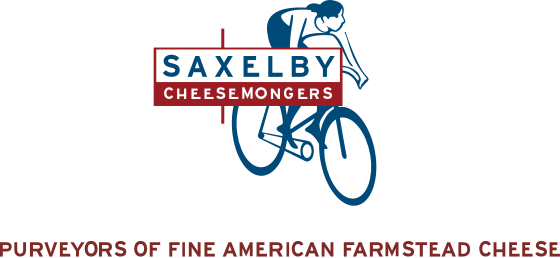
At 2,800 feet above sea level, the winter winds howling through Meadow Creek Dairy in Galax, Virginia, can chill you to the bone. "The cows don't mind the cold," says Kat Feete, the farm's general manager, projecting her voice on the phone so we can hear her over the not-infrequent gusts of chilly air. "They get to spend the winter chowing down on hay in the barn and chilling out."
Meadow Creek is the rare American farmstead creamery that only makes cheese during the growing season, when the cows can graze on fresh pasture. During the winter, the cows and humans get a break—sort of. There's still lots to do on the farm, like fixing equipment and planning the upcoming year's financials, but "everybody gets a vacation for two weeks or more," Feete says. Lengthy time off is practically unheard of on small farms. Meadow Creek, though, is particularly attuned to the seasons, and agricultural wisdom says that rest is just as important as explosive growth.

If you haven't tried the Feete family's grass fed cheeses, it's time you did. Their buttery, nutty Appalachian—the farm's first cheese, created by Helen Feete in 1998—recently won a Super Gold medal at the World Cheese Awards in Norway. Fans of strong cheeses with pungent flavors have to try Grayson, a square shaped washed rind specimen with a brilliant beefy bite and the consistency of buttercream frosting when ripe. In a slice of Mountaineer, the farm's version of the earthy tommes made in the Swiss Alps, you can practically taste the grass growing.
The Feete family established Meadow Creek as a grass fed dairy in 1988, and started making cheese 10 years later to add value to their exceptional milk. Their farm has a single crop: grass to feed the cows. But it's not just any grass. Kat Feete explains the mix of ryegrass, clover, plantain, chicory, and brassicas forms a mixed perennial pasture that's good for the soil and the cows. During the growing season, cows only graze on small patches for 12 hours at a time, then are moved to another spot so the plants can regenerate. "It creates a deep root structure for the grass," she says, "and the perennials never get super tall, seedy, or weedy." The exact mix of pasture has been a moving target since the 1980s. Part of working with the seasons is understanding that an ecosystem is never "finished," and always needs refining based on new environmental inputs.

Their respect for biodiversity extends to the cows, too. Rick and Helen Feete began in 1988 with a mixed breed herd, primarily Jerseys and Friesians with some Montbeliardes and other European breeds. They haven't bought a cow since 1989. By carefully controlling breeding in their closed herd, Rick can adjust genetics to their needs. "Diversity gives you the strength and resilience to meet challenges that come your way," Feete says.
After three rocky pandemic years, the Feetes are starting to feel like the ground beneath them has settled. Cheese sales dropped 90% in the spring of 2020. The family had to dump milk and sell cows to keep above water; a PPP loan allowed them to keep their staff on payroll. Finding and retaining workers is a challenge, Feete mentions. Not many people want to sign up for the long hours of farm work. The family provides housing for interns and seasonal staff, and often hires foreign workers with four-year degrees in food science or agriculture under a J1 visa program.

This, plus a 15-year internship partnership with Ohio State University, contributes to a diverse background of workers on the farm, with representatives from Latin America, Africa, and Southeast Asia. "It takes more work to keep up with different peoples' language or tech skills," Feete says, "but it gives you the chance to say, 'if one person fails, let's get someone else in here, she may see something that we don't.'" The farm employs 12 to 16 people, including former intern Dre Snow, who runs the aging cellar, and Ana Arguelo, who also began as an intern and now works with Helen Feete as production manager in the cheese house. Kat's brother Jim, and their father, Rick, manage the herd and pasture.
"It's gotten to be a more complex operation than any of us could have imagined when my mom was making cheese two to three times a week and selling at farmers markets in 1998," Feete says. As the farm and creamery have grown, they've gotten creative with technology and recycling. Waste water from the dairy parlor and cheese house irrigates the land; they've experimented with methane digesters and solar and wind power to lessen their dependency on the rural power grid, which is unreliable at times.
What's abundantly clear is that you can't have a sustainable farm and creamery without diversification. "It's all buzzwords, but it turns out there's a good reason behind them," Feete admits. "Whether it's cattle, grass, people, tech—some thrive in certain situations and others fail. But you have alternatives to pick up the slack."
Try Meadow Creek Dairy's amazing cheeses!
Farm photos by Dre Snow, courtesy of Meadow Creek Dairy.

